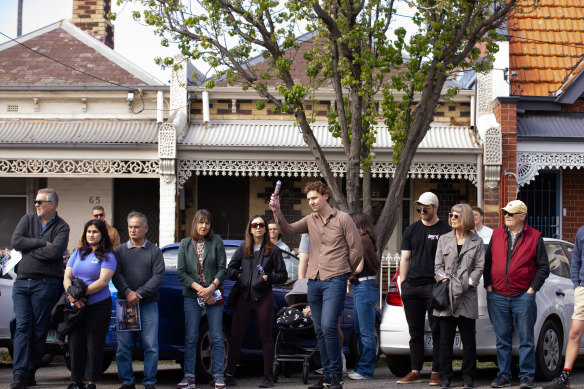The type of Melbourne property you should have bought a decade ago
By Jim Malo and Elizabeth Redman
Melbourne’s median house price has risen by more than two-thirds over the past decade, as demand to live in the city outstrips the supply of land.
But unit prices have risen less than half as fast, and neither property type has lived up to the adage that property prices double every 10 years.

Melbourne house prices have risen by more than two-thirds in a decade.Credit: Simon Schluter
Melbourne house prices rose 67.7 per cent to a median $1,024,000 in the 10 years to September 2024, the latest Domain House Price Report, released on Tuesday, shows.
Only a decade ago, the typical Melbourne house could be bought for about $610,000.
The capital’s typical unit cost under $435,000 a decade ago, and has since risen 31.7 per cent to a median of $572,000.
Domain chief of research and economics Nicola Powell said Melbourne had better addressed an undersupply of housing than cities such as Sydney, and this had stemmed price growth.
“Melbourne has been much better at pumping out supply both in the sprawl and the high-rise also,” Powell said.
“So it’s been much better at providing homes and providing homes in line with population growth relative to what Sydney has been able to do.”
The last decade included a unit-building boom, followed by a crackdown on bank lending to investors. Once the pandemic began, Melburnians flocked to detached houses for more space to work from home.
“Generally speaking, houses see greater rates of growth over the longer term because it is the block of land that sees value appreciation, and it is the house that depreciates over time,” Powell said. “A unit or apartment doesn’t see that rate of price growth in comparison.”
She added it was not always the case that property prices would double in a decade, and said the lower growth in unit prices made it hard for first home buyers to upsize, even as it meant better affordability for entry-priced properties.
Even among units, investor-skewed apartments did not necessarily have the same rate of growth as heritage units, she said.
“It’s almost like starting again – you’ve bought your first home, you’ve bought a unit. That leap to a house is so much greater,” she said.
“It’s absolutely inferior. You cannot compare that capital growth that somebody would see in a unit [with] what somebody that is a Boomer today has reaped, decades of really strong rates of property price cycles.

Melbourne house prices have risen faster than units.Credit: Simon Schluter
“When prices fall it’s great for anybody trying to get into the property ladder, but we need to look at how we’re creating and building.”
She called for a more diverse array of affordable development such as terraces or townhomes.
PEXA chief economist Julie Toth agreed that the value of land had accelerated more strongly than the price of the built structure on top of it.
“Land is a fixed commodity, it’s finite,” she said. “As demand increases for that land, the price goes up because we can’t magically add more land – what we can do is add more density to that land.”
She said some locations and time-frames had seen property values double in a decade, but it was not uniform. Some Melbourne apartments, for example, have lost value over the past decade, she said.
“Victoria has been more successful in supplying new housing and particularly new high-density housing than the other big cities,” she said, adding Melbourne also had the biggest population outflow during the lockdown years.
On the other hand, lower capital growth meant better housing affordability, she said.
“We want a big increase in supply and we want better affordability which does in reality mean slower, smaller price rises,” she said.
“If we want better affordability then we can’t be seeking capital growth from housing.”
The Property Bureau buyers’ agent Alastair Mairs said an oversupply of the wrong type of units, flammable cladding issues, negative sentiment and general distaste for apartment living had caused houses and apartments to grow at different rates.
“They’re scared of the fact there is no growth, they’re scared of cladding issues and everything else that’s been coming out, and there’s way more choice than houses.”
Mairs didn’t recommend his clients buy recently built apartments because they regularly went backwards in price.
“The brand new ones, those people are really hurting now. A lot of those apartments, if you bought a $600,000 apartment 10 years ago with no stamp duty, it’s now worth $550,000,” he said. “That holds you back so much, and your next generations.”
The advocate said it was possible to buy an apartment that would attract some price growth, saying car spaces are non-negotiable and outdoor space is important.
“They’re big inside, they have solid floors, they’re low-rise. They don’t have the gyms or outdoor gardens that are rarely used. You need big rooms, storage.”